Central Ukraine: Chassidic Pilgrims and a Terrifying Museum
- Aaron Schorr
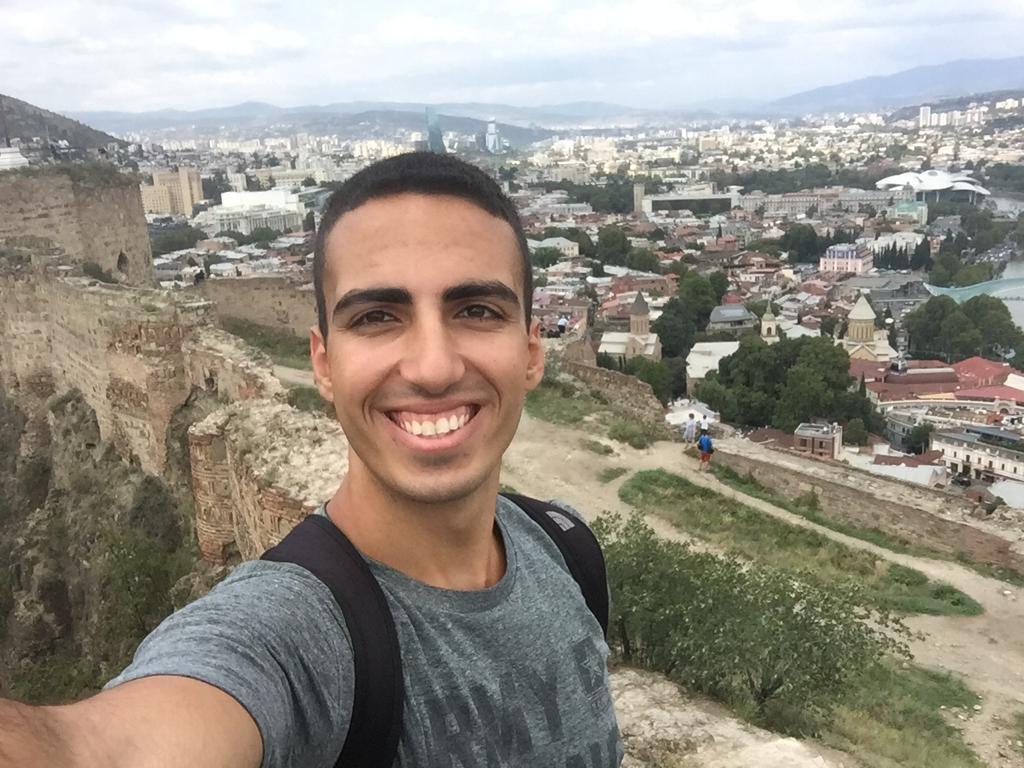
- Aug 24, 2021
- 12 min read

Past the beautiful train station in Odessa was the much less beautiful avtovoghzal, or bus station. We arrived to find a crowd of locals queuing to load their luggage on a bus to Kyiv and joined the line (a note on the spelling: lots of Ukrainian places have Ukrainian names in addition to either Russian, Polish, or German versions. In the case of the Ukrainian capital, I will use the form Київ (Kyiv), as the Russian Киев (Kiev) is overwhelmingly rejected by locals). We weren’t going to the capital, but rather to a small city about halfway there - Uman. If the bus hadn’t been stifling, it would have been rather comfortable. The heat put me to sleep, but every time I woke up the scenery was exactly the same: rolling green fields with an occasional forest and town, just like a Hasidic story.
We got off the bus and were hit with cool, refreshing air. It was a true joy, made better by the Гамбургер (“gamburger”) and хот-дог (“chot-dog”) stands near the platform. Our hotel was near the bus station, a part of town which held no clues to the city’s alternative side besides a solitary Jewish girl who walked past us in a long skirt.
Where Булица Пушкина Becomes שדרות אחדות ישראל
To those for whom the name “Uman” does not ring a bell, a brief explanation is in order. Though he spent most of his life elsewhere, Uman was the home of Rabbi Nachman of Breslau when he died in 1810. Nachman propagated a new and revolutionary form of Hassidic Judaism that combined mysticism, Torah study, and spirituality, and his teachings attract tens of thousands of followers today. In Israel in particular, Breslau Hassidic Judaism is popular among “born-again” Orthodox Jews, and is associated with specific subsets of the settler movement, proselytization, and a whole host of elements of society I prefer to avoid. Especially around the Jewish New Year, Uman becomes a pilgrimage site for thousands of people who seek to welcome the new year in Nachman’s presence. Most are devout believers in search of a spiritual connection, but the site has gained notoriety in Israel for drug use, prostitution, and general shenanigans that accompany the process, as well.
We were staying about 15 minutes north of the grave site, and as we walked towards it, we could feel the landscape changing. We set out in a normal Central Ukrainian town, but suddenly we began to see signs and real estate ads in Hebrew, along with information on how to reach Hatzolah, the Jewish EMT service in the city. By the time we reached Pushkinskaya St., the main drag in the Jewish area, it felt like we were in Bnei Brak, Williamsburg, or northern Jerusalem. Nearly everyone around us was male and dressed in black overcoats, pants, and hats, with the exception of some Ukrainian babushkas selling head coverings and assorted souvenirs and a few police officers. There wasn’t a single sign in Ukrainian or Russian, and the street was renamed שדרות אחדות ישראל (“Unity of Israel Blvd.”).
We had heard that there was a massive meal complex and found it rather effortlessly, lured by the sounds of a Yiddish version of Worth It blasting over a PA system. We walked into a huge tin hut, and followed long paths of barricades to a central kitchen, where we each got a styrofoam box with food. We were then directed by boys in vests to a specific dining hall, where rows upon rows of identically-dressed men were eating at long tables. There must have been about two dozen rooms, and when ours was full, a barricade was moved to the entrance and the incoming crowd was directed into the next free one. The level of sophistication and organization was truly impressive, especially considering the reputation that Breslau Chassidim have for favoring happiness and spiritual gratification over practicality. The entire complex was apparently donated by an American Jew who couldn’t have children until Rabbi Nachman helped him out, and we were very grateful.
We crossed the avenue towards the grave site as the music changed to a Yiddish version of a Sting song. Large signs asked women not to stand in front of the site - “not even to take pictures” - because it harmed “the holiness of the place”, while others warned that smartphones were not welcome, even as we kept spotting them. Inside the building was sheer chaos, so we waited outside while people were praying mincha (afternoon prayers) for the crowd to die down a little. Bilal and Yotam were both looking very uncomfortable, and multiple people urged me to stay in Uman through the New Year. One man took a particular interest in trying to get Yotam and me to keep Shabbat better while completely ignoring Bilal, and spent 15 minutes working out a game plan with us while urging us to spend a Shabbat both in Uman and in Medzhybizh, where the father of Hassidic Judaism is buried.
By now, the human density inside had dropped a little, and we walked through a maze of small rooms occupied by men praying and studying feverishly. I inadvertently let out a “Jesus Christ,” but luckily nobody seemed to hear it. It was still crowded enough to give us all COVID 5 times over, and we were happy to make it to the other end, where there was a small pedestrian bridge to carry us to the other end of the street. There was also anti-Israeli propaganda lambasting the Zionist regime for its efforts to bar pilgrims from arriving the previous year, and warning it not to try again this year. The Israeli ambassador to Ukraine had apparently visited earlier that day, and I was curious how he was treated.
Below the grave site was a strange cluster of wooden shacks occupied by Hassidic men on their visits, with a backdrop of brutalist apartment blocks on the hill above. We walked back up the hill to the commercial center, which had a supermarket, various kosher restaurants, even a PCR clinic for those returning to Israel. The supermarket was another very odd place, stocked with Israeli snacks, hummus, and even tuna fish, with Israeli soul music playing over speakers. We introduced Bilal to Israeli bamba, and walked past massive mountains of trash to return to town. The entire place was outlandish beyond my wildest dreams, and I didn't even see any of the debauchery for which it's famous.
The supermarket near our hotel was quite a contrast. The produce in particular was of highly questionable quality, as if to remind us where we were. Standing in line, two rather young girls asked to cut us because they needed to buy their “alkogol” before 9:30, which seemed to be the cutoff time. They paid with a credit card, and the cashier had to chase them down out of the market when their card declined. We had bought ingredients to make our by now classic shakshuka, but when we retuned we realized the kitchen had no stove. The manager was right there, and I called her into the kitchen: “У нас есть подарки для вас” (we have some gifts for you). I handed her a carton of eggs, a jar of tomato paste, an onion, and a head of garlic, and she almost died laughing.

To Go to Uman and Not to Sofiyivka?!
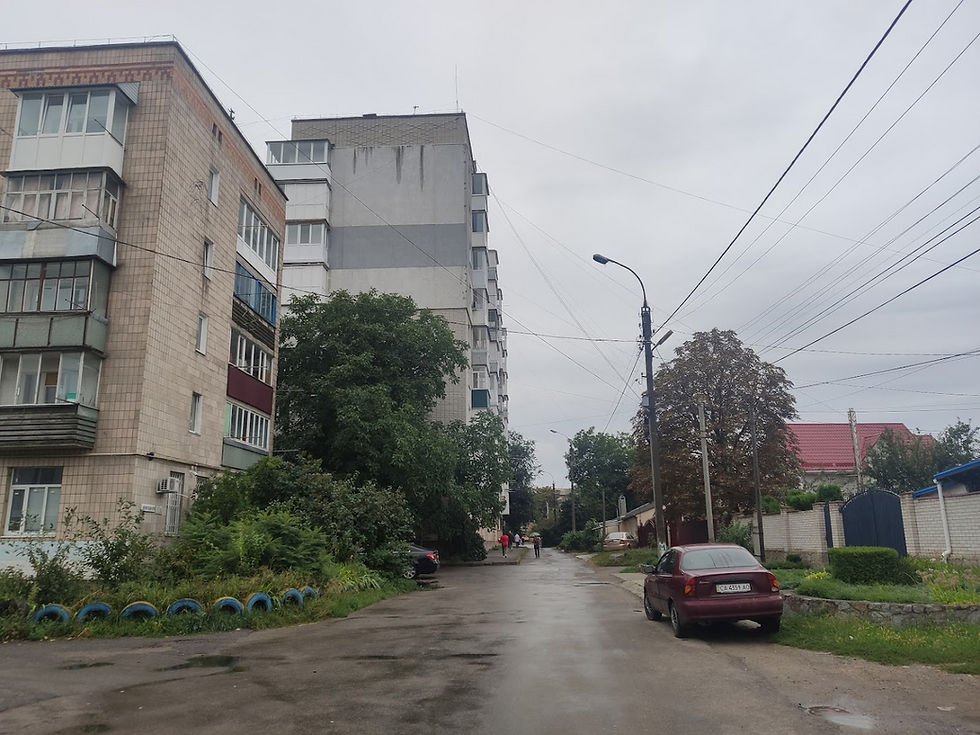
The next morning was cold and rainy, perfect for what we had in store. We walked to the center of town to get breakfast, and climbed up to the third floor of a dark and deserted shopping center to find the highest-rated café in Uman. The place was a little corner of bourgeois culture in a working-class town, with coffee blends for different parts of the world and paintings by local artists hanging from the walls. It was also being used by a group of tough-looking men in dark suits to hold a very shady-looking business meeting at the table behind us. No food was served, though, so I had to visit a little bread stand on the street to get mediocre - but very cheap - pastries.
East of the town center is Sofiyivka Arboretum - officially Ukraine’s “national dendrological park”, but I couldn’t find any other instances of the term being used. Rabbi Nachman himself reportedly said of the park: ״אין אומן זיין און אין סופיא נישט?!״ (to go to Uman and not to Sofiyivka?!). We paid the 100 UAH ($4) entry fee, and found ourselves in a beautiful forest, which led us to a lake surrounded by fake marble statues. Curiously, they all depicted Ancient Greek characters, both real and mythical. Plato, Aristotle, and Euripides were in attendance, but so were Cupid, Orpheus, and Paris. The original statues were constructed by Stanislav Potocki, an 18th century Polish nobleman who built the arboretum as a gift to his wife, Sofia. The whole place felt very aristocratic and out of place, down to the waterfalls, hedge displays, and obelisk topped with a Polish eagle, and it was remarkable that it had survived over 70 years of Soviet administration. Nobody was trying to hide the aristocratic origins, either - in fact, there were stands selling full early modern Polish and Ukrainian noble regalia by the lakeside.
A Lesson in Fear
Our next stop was a small museum near the town of Pervomaysk, over an hour to the south-east. There was an English guide named Elena who worked at the museum, and she had somehow coordinated for a marshrutka on the Kyiv-Pervomaysk route to pick us up at Uman and drop us off at the museum, even giving me the van’s plate number the previous evening. We were sitting on a bench at the bus station when a short man smoking a cigarette approached us and ushered us on to his van after I confirmed that he was heading to музей в Первомайск. There was another rather clueless-looking tourist on the bus who introduced himself as Carlo, a Peruvian actuarial consultant living in the US who had just come back from a 3-day tour of Chernobyl. The European highway that had brought us to Uman from Odessa turned into a one-lane road full of trucks and eventually a pothole-strewn nightmare through a series of drab villages, and after an hour the driver dropped us at the intersection of a dirt road between fields of 7-foot corn stalks and sunflowers nearly as high.

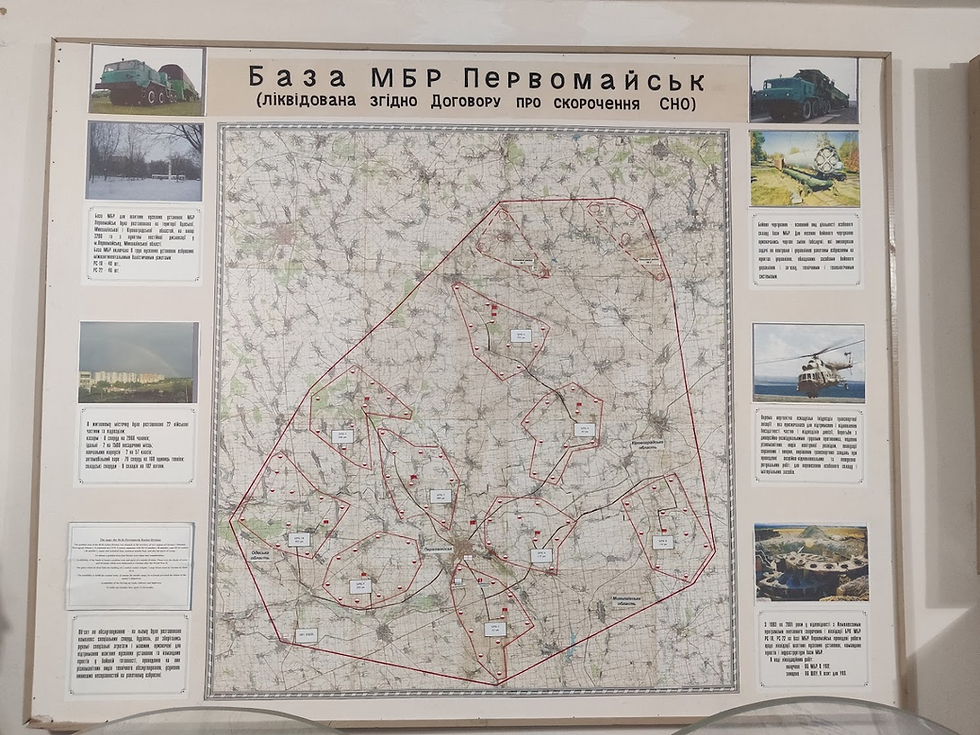
We walked down the road for a kilometer or so until arriving at a chain-link gate, where Elena came out to meet us. A sign above the gate welcomed us to the Museum of Strategic Rocket Forces, which had occupied a place of honor on my museum bucket list. This was the former base of the 46th Rocket Division of the Soviet Strategic Rocket Forces, one of several units responsible for the maintenance, protection, and operation of nuclear intercontinental ballistic missiles (ICBMs) to be used against NATO in a war that fortunately never happened. The surrounding countryside hosted 86 ICBMs in deep underground silos, clustered in groups of nine and ten around smaller, local command posts.
The most recent weapons to be stored here were the SS-19 Stiletto and the SS-24 Scalpel, as the SS-18 Satan - the largest ICBM in Soviet service (and, indeed, in history) - was not stationed in Ukraine. The latter models of both systems were capable of delivering payloads with yields of around 5 megatons of TNT halfway around the world, which means that the Pervomaysk division alone could have wiped out the United States 4 times over in under half an hour. This speed was critical, because with the SS-18 in service, the weapons at Pervomaysk were primarily intended for a second strike - that is, to target American and NATO cities and military facilities after their own ICBM sites had been decimated by a previous strike. After the dissolution of the Soviet Union, Ukraine remained in possession of over 1,700 nuclear weapons and their delivery systems, and decided to disarm itself in exchange for economic assistance and security guarantees from Russia and the United States. The warheads were delivered to Russia by 2001 and the rockets and silos destroyed under American supervision, and the rest (including the Russian annexation of Crimea) is history.
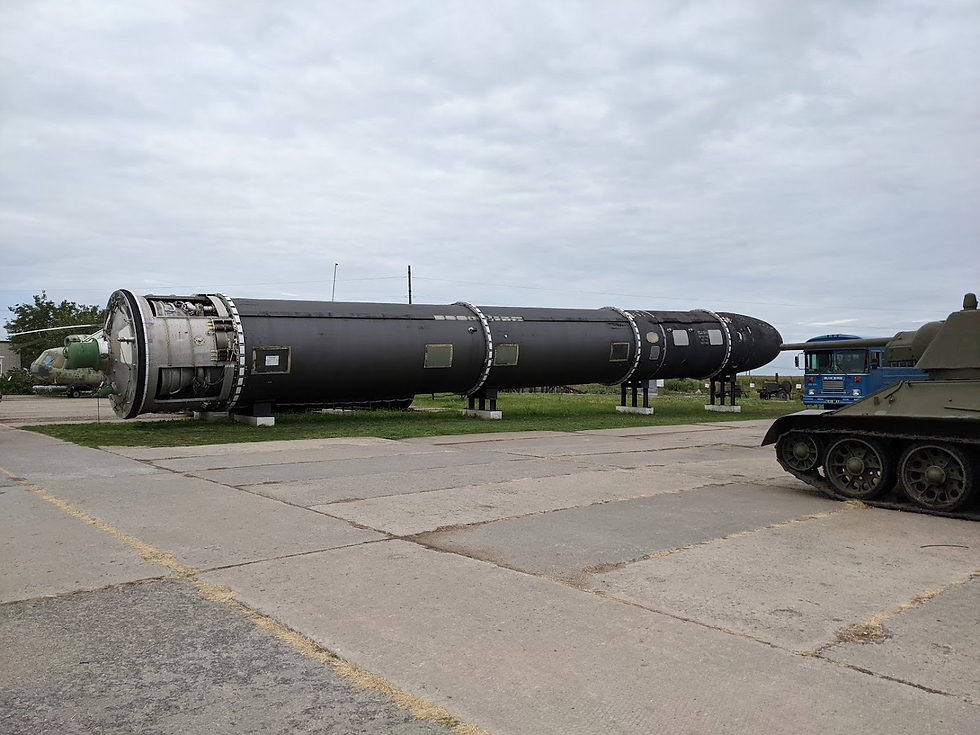

The museum explains this story in detail, along with great photos and relics from the decommissioning process, which involved American engineers blowing up massive silos and filling them with concrete in the middle of the Ukrainian countryside. Today, the former silos are entirely hidden from view, covered with earth, farmed over, and lost to time, except the one at the museum. There were also treasure troves of Soviet weaponry, including certain types of shoulder-launched anti-aircraft and anti-tank rockets operated by Israel’s adversaries that Yotam and I took particular interest in. Outside the main building were scattered various rocket engines, cut open so their inner workings were visible. They had been left in the rain, sun, and snow for nearly three decades, but looked as good as new. Indeed, the whole place was a testament to the durability of Soviet military engineering - the SS-24 engines had to be idled non-stop to maintain strategic alert, and did so for decades in air-conditioned silos without failing.
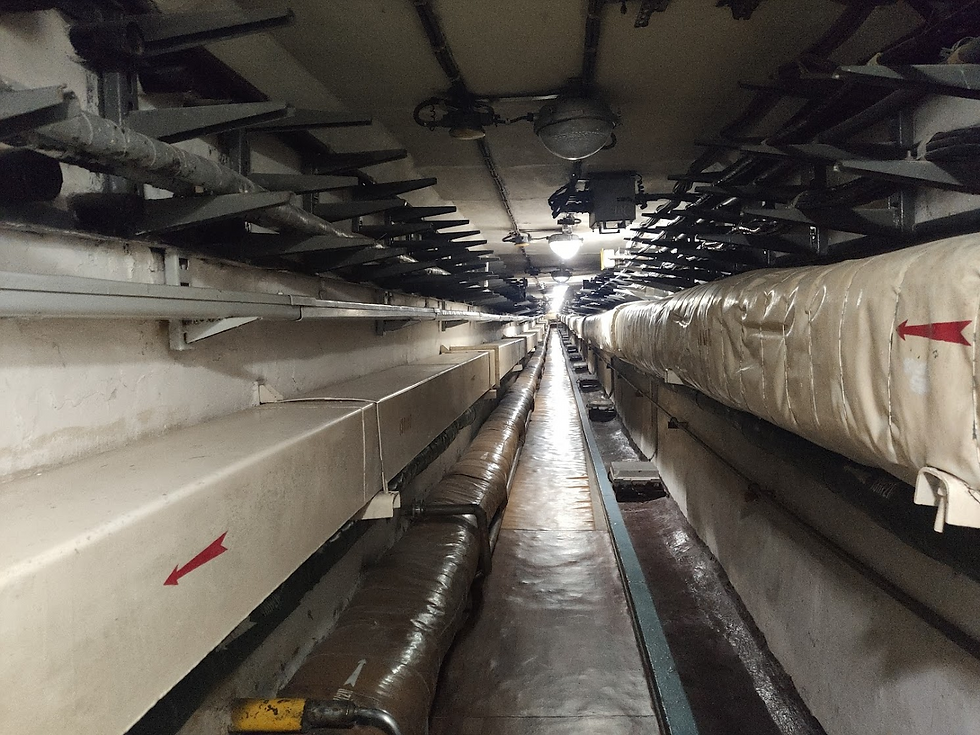
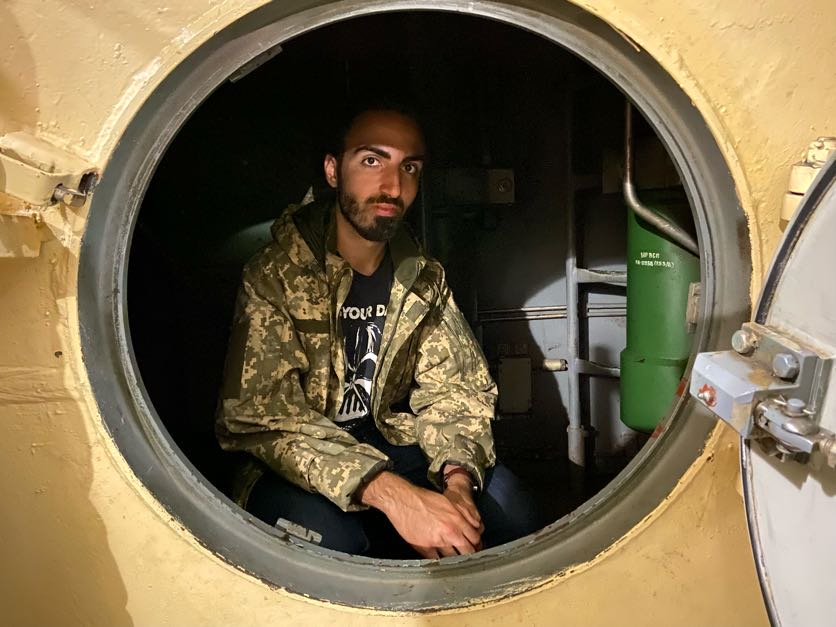
All sensitive operations at the site were carried out underground, both for protection from aerial attack and to hide from Western surveillance. We walked through a dark tunnel lined with pipes and reached the operations bunker, a 12-story silo dug 45 meters into the ground from which the division’s missiles were monitored and operated. The structure was only 3.3 meters in diameter, but it weighed 125 tons and was stabilized for survivability in case of a nearby strike. We walked through a pair of 750 kg doors and entered the top level, where there were two tiny escape hatches in the wall. The Soviet military knew that the soldiers here would never survive a nuclear strike, but they went to great lengths to convince them that they would in the hopes of boosting their morale. This included building the escape hatches, along with providing the soldiers with emergency rations for 45 days and backpacks to carry them when they left. Since they would presumably be disoriented, the site’s main antenna was deliberately constructed at an angle so it would fall over in a specific direction and the soldiers would know which way was north. Of course, in a real nuclear strike the entire site would be vaporized, but the soldiers here didn’t know that.

The silo still has all of its original electrical systems and elevator, a tiny contraption hanging by two metal threads and suspended over the 45-meter drop. The rest of our group headed down while we waited in the entrance to the silo. There was a red rotary phone nearby, and out of curiosity I dialed 23, the number for the elevator according to a sign behind it. It whirred and clicked, and to my astonishment, I heard Elena’s voice from 11 floors below me, saying that she would be up soon. The three of us squeezed into the tiny compartment with her and descended to the 11th floor.
Each of us strapped into a seat at a console to simulate the launch sequence. Several buttons were pressed and colorful lights lit up on the wall, indicating that live missiles were primed for launch. Yotam and I each keyed in a 10-character alphanumeric sequence and an additional green light lit up on the wall. We counted down and pressed a nondescript grey button simultaneously. Tinny alarms blared from the walls, more lights lit up, and a TV screen above my head turned on, showing video footage of each of the ten missiles being launched to the sounds of Requiem for a Dream. A gunpowder primer lifted the missiles out of their silos before they engulfed in a ball of flame that carried them into the atmosphere and over the North Pole before coming to rain fire and death on American cities 20-30 minutes later. In an emergency, the command post could be overridden and the missiles launched remotely from Moscow with the use of telemetry rockets fired over the different missile bases. We all had chills, and it was a thoroughly terrifying place to visit.
We climbed down a small hatch to the soldiers’ living quarters on the 12th and bottom floor. They were awfully cramped and stereotypically Soviet, with a samovar for tea, a TV, and a radio set that still picked up AM broadcasts from Moscow. The soldiers here had a tough life, and not just because they were tasked with ushering in Armageddon. The Soviet military kept the base personnel to a minimum for security reasons and never provided enough supplies, so after finishing their six-hour shifts during which they were drilled relentlessly in dummy launches, they had to cook, clean, and grow their own food on a small farm. This was a far cry from the American missile crews who did nothing but focus on their jobs, but was much better than the Russian missile crews in Siberia who saw their families once a year. I had visited an American silo in Arizona this January, and the two were extremely similar and equally terrifying. In comparison, however, the Soviet base was smaller, lower-tech, and much gloomier in its drab Communist functionality.
We emerged from the silo and into a grassy area which Elena called a “playground for boys”. Soviet military equipment was scattered everywhere, from the trucks used to transport the missiles and lower them into their silos to tanks to fighter jets. This was no Western military museum, so I could simply hop onto the wing of a MiG-21, climb onto the fuselage, and straddle the cockpit as if I were riding a horse. It was far better than an adult playground, particularly the planes and SA-6, -8, and -15 missiles on display, which I had spent hours and hours looking at on computer screens as a soldier. There was a souvenir shop with dozens of working weapons on display - mostly Soviet-made, but not just. I wanted to stay and see what was what, but our driver was back earlier than expected.

We made the return trip to Uman and walked through the town square to found dinner. Vaguely patriotic music was playing over speakers, past which were roads in an abysmal state of disrepair. This is one of the poorest parts of Ukraine - the capital region has business, the east has industry, and the west trades with the EU - and it shows. A Ukrainian friend of mine put it somewhat more bluntly: “In the west people go to Poland and work 80 hours a week in a cigarette factory to start a business back home. In Central Ukraine they wait for the government to give them everything.” They couldn’t even make khachapuri properly at the Caucasian restaurant we went to for dinner - it tasted like an oval-shaped grilled cheese with mozzarella.



































































Nice, just FYI (from Wikipedia): "Breslov" is the name used nowadays by Breslover followers for the town of Bratslav, where Rebbe Nachman lived for the last eight years of his life. Bratslav is located on the Bug river in Ukraine (latitude 48.82 N., longitude 28.95 E.), midway between Tulchin to the south and Nemirov to the north—9 miles (15 kilometres) from each. Bratslav should not be confused with Wrocław, a town now located in Poland, called in German "Breslau", and also pronounced "Breslov" in Yiddish, which was a renowned Jewish center in its own right.[1]